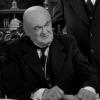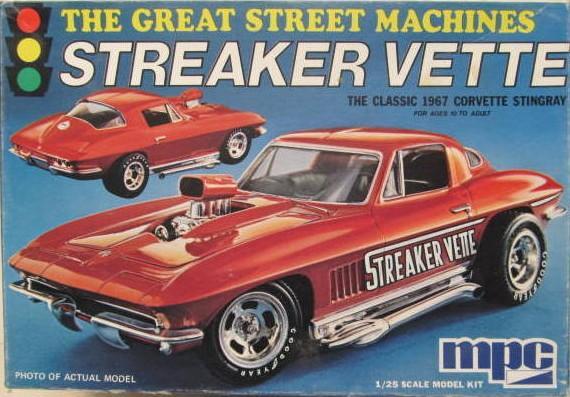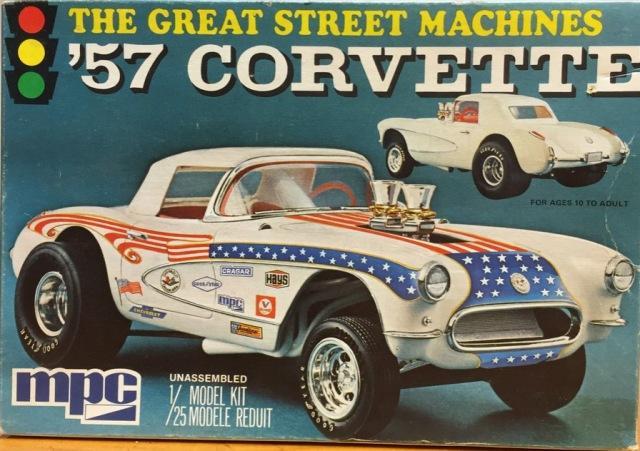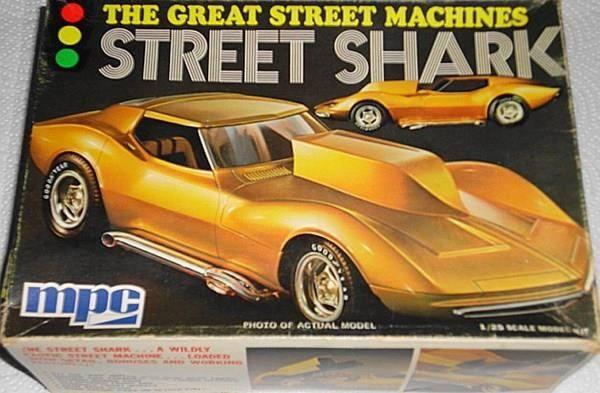-
Posts
1,316 -
Joined
-
Last visited
Content Type
Profiles
Forums
Events
Gallery
Everything posted by Robberbaron
-
I guess we're straying a bit further off the '34 Ford topic here, but anyone know the story of this '25 T kit, as well? I've never heard it mentioned as being an old Palmer or Pyro tool. Seems like maybe something similar to the Lindberg '40 Ford coupe: a rip-off by Lindberg of the AMT Tall T? Definitely are differences, since it has a flathead instead of the AMT's Lincoln V8. I was also surprised a couple months ago to hear that they decided to throw that T-Bird engine into this reissue. I was kind of thinking of getting one of these just for a parts source, but I don't know if any of the parts are decent enough to bother using on anything else (aside from the AMT T-Bird engine, maybe).
-
Mark, you beat me to it regarding those 3 different '40 Ford coupe tools now all being in the Round 2 fold. Since that MPC Mercury already has the 1950 side trim, seems like Round 2 could fairly easily tool up a 1950 grille assembly to make that kit a bit more unique and set it apart a bit more from the classic AMT '49 kit. Would probably spur some better sales.
-

Moebius '65 Mercury Comet Cyclone news
Robberbaron replied to Dave Metzner's topic in Car Kit News & Reviews
Really like what I'm seeing so far. Also, very happy to see a second set of wheels being included in some of these new Moebius kits like this one and the upcoming '65 Belvedere. -
There's about a hundred other kits where you can get a Hemi to stick in there, if that's what your really want. Don't see why that should be a deal breaker for anyone...
-

What are the best kit Magnum 500s with trim ring?
Robberbaron replied to VRM's topic in Car Kit News & Reviews
Those are actually Buick Road Wheels, look somewhat similar to Magnums, but they're a different design. As far as I know, Buick never offered Magnums 500s from the factory on any of their models, since they had the road wheels instead. -
Correct that it's a convertible interior, however, Johan may never have made a correct hardtop interior. It was pretty common back in the 1960s to design one interior tub with the doglegs, and use it for both the convertible and hardtop kits and promos. In addition to many other Johan kits, a lot of the vintage AMT kits also used this method, such as the '64 Impala.
-
Several other 1980s & 1990s issued Johan kits had similar issues. The Javelin AMX "Pro Stock" had a '72 rear bumper/taillight assembly, I believe, yet the rear of the body was for the 73/74 design taillight panel, so the '72 taillights ended up "floating" in the opening. They also ended up sticking the front seats from the '68 Cadillac in the '64 Caddy kits (or was it the other way around? Been awhile since I looked at those, either way, the front seat had a VERY different upholstery pattern compared to the rear seat molded into the tub.) Not sure if Johan always did it this way, but by the 1980s/90s, at least some of the Johan kits had taillights that were molded in normal clear plastic, then coated with clear red. I found this out after I installed the taillights in a body, and THEN decided to clear coat the body with Testors Gloss Coat. (gimme a break - I was a kid!) The Testors dissolved the red coating and it bled out into the clear coat in the area surrounding the taillights. Think this might have been on the Comet Pro Stock kit? Once it happened, it made sense why the red taillights in so many of my Johan kits looked funky: it all depended on how evenly/thickly the red overcoating was applied. In a lot of my Johan kits, the taillights seem to have almost an orange tinge, I think it's just that the red coating was applied too thinly. Chirstian, thanks for posting the contents of this '62 Dodge. I bought a pretty good assortment of Johan kits when I was a kid, but never got around to getting the 62 Dodges/Plymouths, or the '63 Plymouth. By the time I decided that I did want them, they were unavailable like all the others...
-

What are the best kit Magnum 500s with trim ring?
Robberbaron replied to VRM's topic in Car Kit News & Reviews
There must be several dozen different 1/25 kits with Magnum 500s that have been available fairly recently (last 20 years). Many of these have already been mentioned, some haven't yet. This is just off the top of my head, and I'm sure there are more that I'm not thinking of: AMT '66 Olds 442 hardtop Lindberg '67 Olds 442 Johan '70 Olds 442 AMT '69 Chevelle SS AMT '70 Chevelle SS Revell '70 Torino GT Revell '70 Torino Cobra Johan '72 Gran Torino Sport Revell '67 Charger R/T Revell '67 Coronet R/T Revell '67 Plymouth GTX Revell '68 Charger R/T Revell '69 Charger R/T Revell '69 Charger Daytona AMT '69 Charger Daytona AMT '68 Roadrunner AMT '69 Plymouth GTX hardtop AMT '69 Plymouth GTX convertible AMT '70 Dodge Coronet R/T AMT '70 Dodge Challenger R/T Johan '69 Roadrunner Johan '69 AMC Hurst SC/Rambler Johan 197? Javelin AMX Also several old 1/24th Monogram tools that also have Magnums: 1969 Dodge Super Bee 1970 Plymouth GTX (before being converted to the Roadrunner) 1970 Plymouth Superbird 1970 Mustang Boss 429 1970 Chevelle SS -

'74 Vega Bruce Larson USA-1_FYI Reissue Update
Robberbaron replied to 69NovaYenko's topic in Car Kit News & Reviews
The 305 didn't debut until 1976. A smogged-out 350 2-barrel WAS in fact the top engine for California or high altitude cars, but only in 1975. Not sure if it's still around, but there used to be a guy that showed up at local cruise nights and car shows with a factory '75 350 Monza he got from California. -

Round2/MPC Charger Street Machine.
Robberbaron replied to stavanzer's topic in Car Kit News & Reviews
The currently available MPC '79 Trans Am also has a set of Spyders in it, I believe they're all the same depth (similar to the ones in the Street Shark pic). Of course, you better like the entire kit, since Round 2 decided to overpriced it for some reason (lists close to 30 bucks at most retailers). If you just want the wheels, resin is definitely the way to go... -

Round2/MPC Charger Street Machine.
Robberbaron replied to stavanzer's topic in Car Kit News & Reviews
Not sure why my original post didn't allow me to comment after the pics I posted? Anyway, who's betting on which of these will be the next reissue? Kind of interesting that all these other kits are Corvettes. I'm kind of partial to the '67 Streaker Vette - seems like it had a nice set of big and little slot mags. The intriguing thing about the '57 Corvette gasser is the set of 6-slot American Dragmasters it had, even though the rears appear to be almost cartoonishly deep. Nevertheless, there's no other currently available kit with a set of those wheels. Something tells me they probably won't be reissuing that Street Shark Vette - a bit too Covette Summer-ish.. -

Round2/MPC Charger Street Machine.
Robberbaron replied to stavanzer's topic in Car Kit News & Reviews
Notice that Round 2 is indicating that there will be additional reissues from "The Great Street Machines" series. The only other ones I'm seeing show up in a Google image search are the following: -

X-Files: Your opinions on the premiere episode?
Robberbaron replied to Harry P.'s topic in The Off-Topic Lounge
My wife and I have watched the new episodes so far, and it seems like they've done a good job of continuing the style and atmosphere of the old series. Will be interesting to see how they explain some things away, such as CSM still being alive, since the end of the original series pretty much unequivocally showed him being completely incinerated in a cave. I also always preferred the "standalone" episodes vs. the vast conspiracy ones. I usually saw most of the original episodes back when they were new, but if you would ever miss one of the "conspiracy" ones, you'd then be out of the loop of all the running plot lines. Due to these new episodes, my wife started watching some of the original first season episodes on Netflix. Amazing how different Gillian Anderson looks now compared to those original episodes. Of course, she was 23 years younger then, too. She's still a very gorgeous woman today, especially considering her age, but she actually seems to have lost a little TOO much weight, she's almost looking gaunt. Always liked how she was almost a little chubby in some of the early seasons. OK, done with my chauvinism for today! -

HOBOY! HOT NEWS! 1974 Dodge Monaco Police Cars Coming!!!!
Robberbaron replied to Danno's topic in Diecast Corner
'Bout time somebody did a Monaco in 1/24 (or 1/25)! Most of the Green light stuff I've seen seems to be done pretty well, as far as proportions, so I'm cautiously optimistic that these will be worth getting. -
If you're not a scale bigot, the Monogram 1/24 Grand Prix stocker is much more accurate, including quarter window shape, trunk profile, rear bumper with rub strips, etc. Gotta bash it with a Monte SS or Grand National kit. This generation GP was available with the Chevy small block, so mechanically the Monte would be closer, if you're doing factory stock.
-
I was thinking it kind of looked that way in that test shot picture, but I couldn't tell for sure, so I didn't comment for fear of looking like a dunce if I was wrong. Those instructions sure seem to indicate that, though (thanks also, MartinFan). Looks like Revell is keeping a close eye on Moebius' methods. Sure seems like that's the case, very similar to the Starsky Torino. Since I have a soft spot for both the Monte SS and GN kits, I also have no problem with that. As far as I'm concerned, 90% of the credit for a kit hinges on whether or not it looks right sitting on the shelf. If this H/O kit does that, I'm all good.
-
At a glance, all the '80s G-bodies might look similar, but each GM make actually used mostly unique sheetmetal, bumpers, taillights, etc. About the only shared body parts are the roof skins and most of the glass, but even the quarter windows are unique to each brand. For the Regal we already have the Monogram Grand National/GNX kits as a starting point. For a Grand Prix, your best bet is to bash the Monogram NASCAR body with either the Monogram Monte SS kit or the GN kit. That GP body is pretty close to stock, and I've seen a couple people turn out pretty nice conversions doing this. Biggest hurdle would be making a correct Grand Prix interior. Just like the bodies, each make's interior had a unique dash, door panels, upholstery, etc. I know, another drawback to the above is that the Monogram Monte SS and Grand National kits are 1/24 scale vs. 1/25. If you can look past that, they really are very good kits with good detail. They were designed right when Monogram was finally hitting their stride, as far as body accuracy, separate interior side panels, etc. Don't think we'll ever see 1/25 versions of those cars from a different manufacturer.
-
Very happy to see the nose as a separate piece from the body shell - leaves open the possibility of a future 87-88 version.
-
Shoot , MCG can easily do a photo-etch set for just all the different 81-86 Cutlass grille variations! There's easily a half dozen different grille patterns for this basic front end design, between the different years and different trim levels, such as basic Cutlass Supreme vs. Calais, etc. Definitely would be nice to get the badging and rocker moldings, too. I agree, if Revell has gotten this one right (along with the rumored follow-up 442), I'm looking at buying several. Never owned one of these Cutlasses myself (we were a Monte Carlo family), but there were LOTS of these cutlasses in my past, owned by friends, relatives, co-workers, neighbors, etc.
-
Looking forward to the '30 A coupe (which we all already knew about) and glad to see the '83 H/O is finally here. Pleasant surprise on that stock '48 coupe, been wishing for that to eventually happen, but didn't actually expect it. Never got the Revell chopped coupe since the roof just didn't appeal to me, and I missed the boat on the IMC coupes, since they were before my time.
-

Moebius 61 Ventura exhaust system locator holes
Robberbaron replied to Dave Metzner's topic in Car Kit News & Reviews
Literally just came home from my LHS with one of these kits, haven't even got the cellophane off yet. Thanks for the heads up, Dave. Very minor issue IMHO - should only take a minute to open those little guys up. FWIW, as he was ringing me up, the owner of my LHS commented about how many of these kits he's already sold. -

Moebius '65 Mercury Comet Cyclone news
Robberbaron replied to Dave Metzner's topic in Car Kit News & Reviews
Thanks for the update, Dave! This one's definitely on my future purchase list. -

AMT 1976 Chevrolet Nova "Street Custom"
Robberbaron replied to Junkman's topic in Car Kit News & Reviews
Not sure if I understand your post. The box contents that Junkman posted are the AMT Street Machine kit, right down to the CB radio ? (and wipers) The picture of the purple car on that box is also the AMT Street Machine kit, looking pretty much built out of the box. The red box art car that he posted is also an AMT, but incorrectly showing factory style wheels/tires and a stock-style flat hood (the hood is included with the hole molded closed, but once you build the engine with the tunnel ram, you must open up the scored hole from underneath). I guess the red box art car doesn't appear to have wipers, but that's the least of the problems in that picture... -
Gotta agree with Steve on this, putting oneself in Round 2's position, you need to honestly ask whether revising this tool back to a Ventura would generate more sales (and therefore more revenue) than leaving it as-is, as a Nova. IMHO, the answer is no. And think about all the sales of a Ventura kit that would be required to even reach the break even point to cover the extensive tooling work to convert the body back, recreate the wheels, etc. Even among the hardcore "lunatic fringe" of the hobby (i.e. online forums such as this), I believe the majority of potential buyers would prefer the Nova. Among the other 90 - 95% of the general "casual" model buying public, there's no question the Nova would sell better. Like it or not, the X-body Venturas are mostly forgotten by the general public nowadays, whereas the Nova is still well remembered. Lots of sales are generated by nostalgia, whether the kit buyer formerly owned a 1:1 themselves, or it was parents, neighbors, friends, etc. If you're old enough, you probably knew at least one person who owned a Nova, and that's a big factor in sales for these older kits. For me, part of the charm of those 75/76/77 Ventura kits is the surprise that they made them at all, but once it got turned into Nova, I think there's no going back. Keep in mind that Round 2 is a business that needs to make money. In short order, they wouldn't be around to reissue anything if they started spending more money on tooling changes than they can recoup in sales.
-

AMT 1976 Chevrolet Nova "Street Custom"
Robberbaron replied to Junkman's topic in Car Kit News & Reviews
I will say that I seem to recall not having too many problems assembling my "Matchbox" version when I was about 15. Seem to recall there maybe wasn't a good way to positively locate the tail panel, but no major challenges that I recall. I was happy with it at the time, but about 5 years later I decided to disassemble it because I was never happy with my original Testors red paint job, plus I never cared for the hood scoop that was included. After stripping the paint and laying down a new paint job, as I began detailing it, I started noticing the proportional issues I hadn't seen when I was younger. Apparently I developed a more critical eye in those 5 years. Nevertheless, it is a buildable kit with a fairly low parts count, so if nothing else you could probably knock it out fairly quickly as a slump buster.



